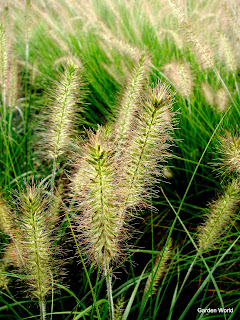The weather has brought us that crisp autumn breeze, and the gorgeous tones of the fall season are beginning to arrive. Nothing says autumn like the combination of striking warm colors with a wisp of soft texture in the garden. From feathery seedheads, to bold and vibrant color, ornamental grasses provide a versatile appeal in any landscape.
Ornamental grasses are known for their ease and low maintenance. Many grasses are also drought tolerant, as well as disease and deer resistant. They’re also known for their year round addition of movement to the garden. Even the smallest of breezes animates their foliage, and in fall, their seedheads.
They’re also regularly praised by landscape designers for their architectural value and four-season interest. After many plants have begun to transition into winter dormancy, grasses continue to provide a distinct texture and form in the winter landscape. Though most ornamental grasses die back in the winter, their dormant foliage and seedheads remain as a focal point in the landscape. They are exceptionally beautiful when covered in winter frost. Most grasses can be cut back in late winter, then return with new growth in the spring.
Ornamental grasses can be incorporated into almost any landscape. Grasses make excellent borders, backdrops, accents, container plantings, and even mass plantings. Don’t forget: seedheads and foliage are even excellent additions to floral arrangements!
Check out our Live Inventory - 30% OFF All Ornamental Grasses!
Grasses for Borders & Edging:







